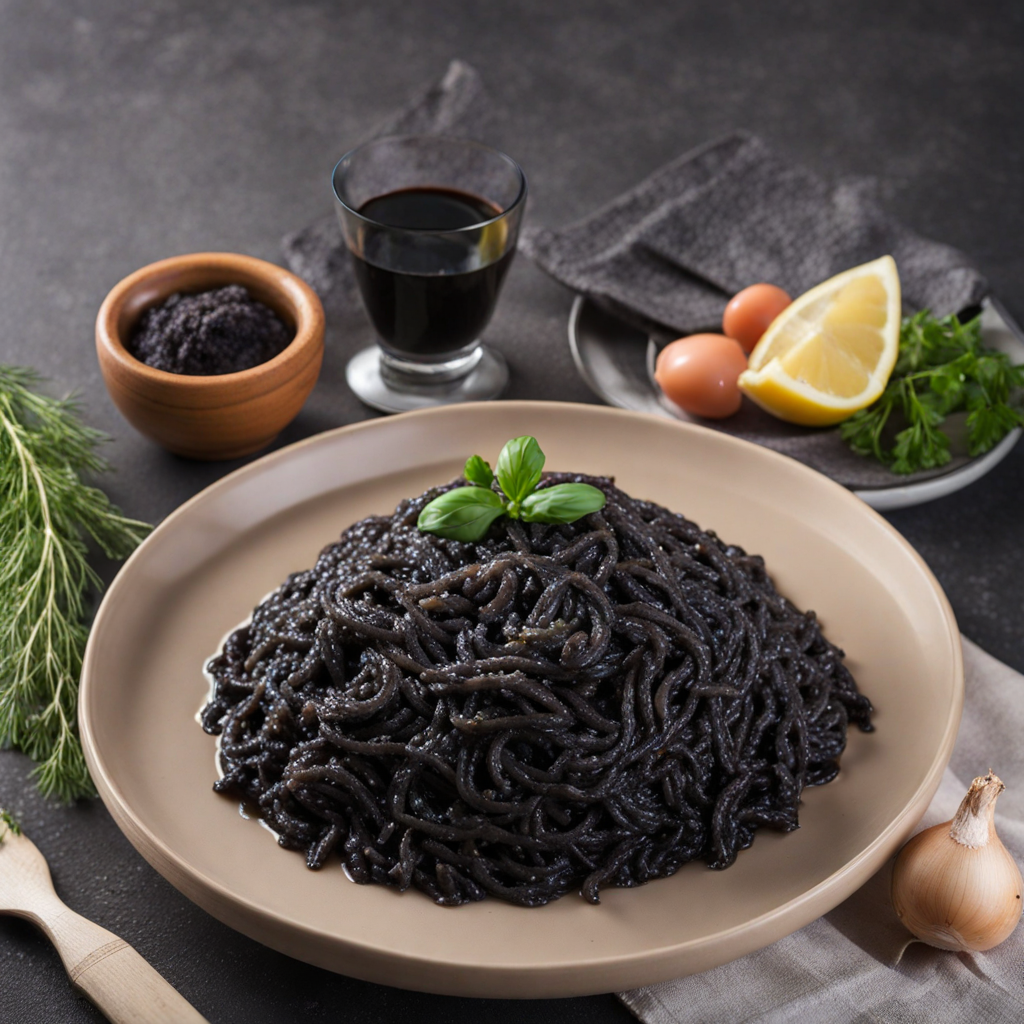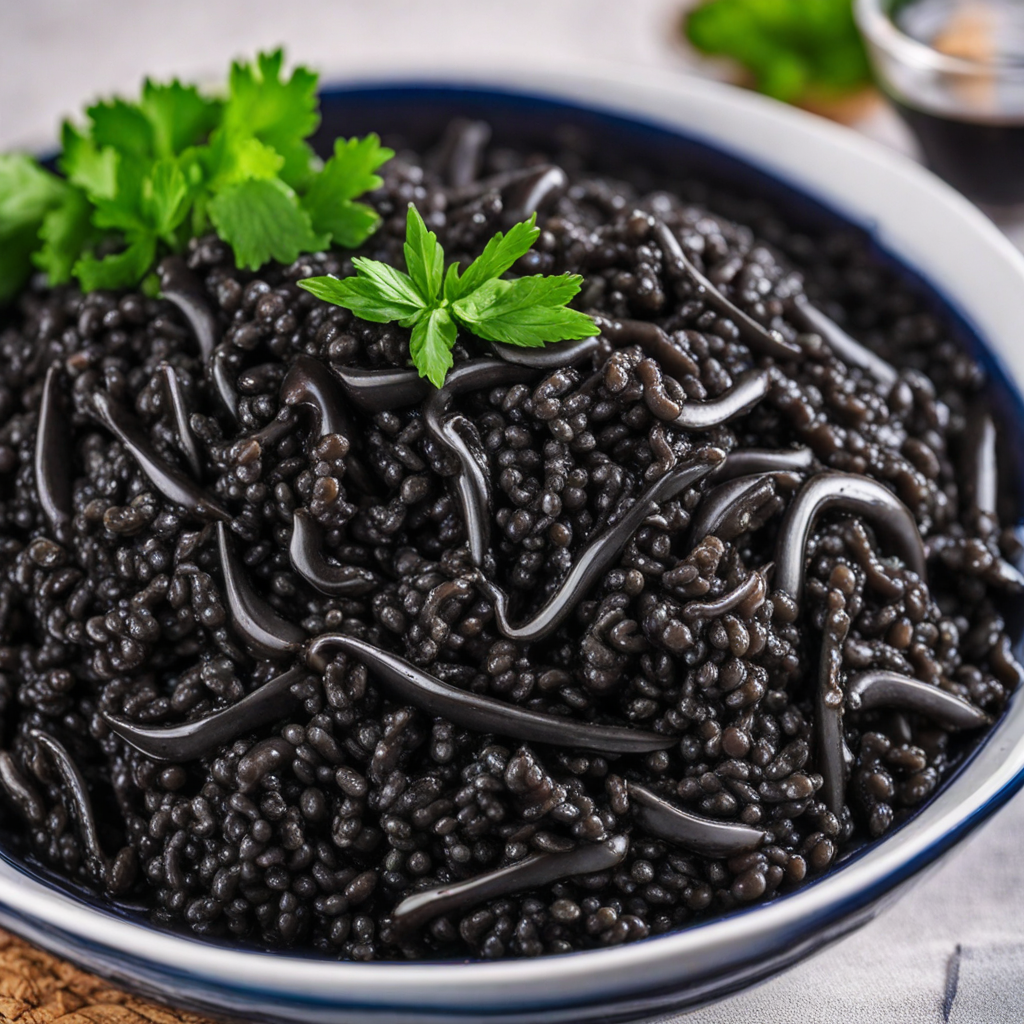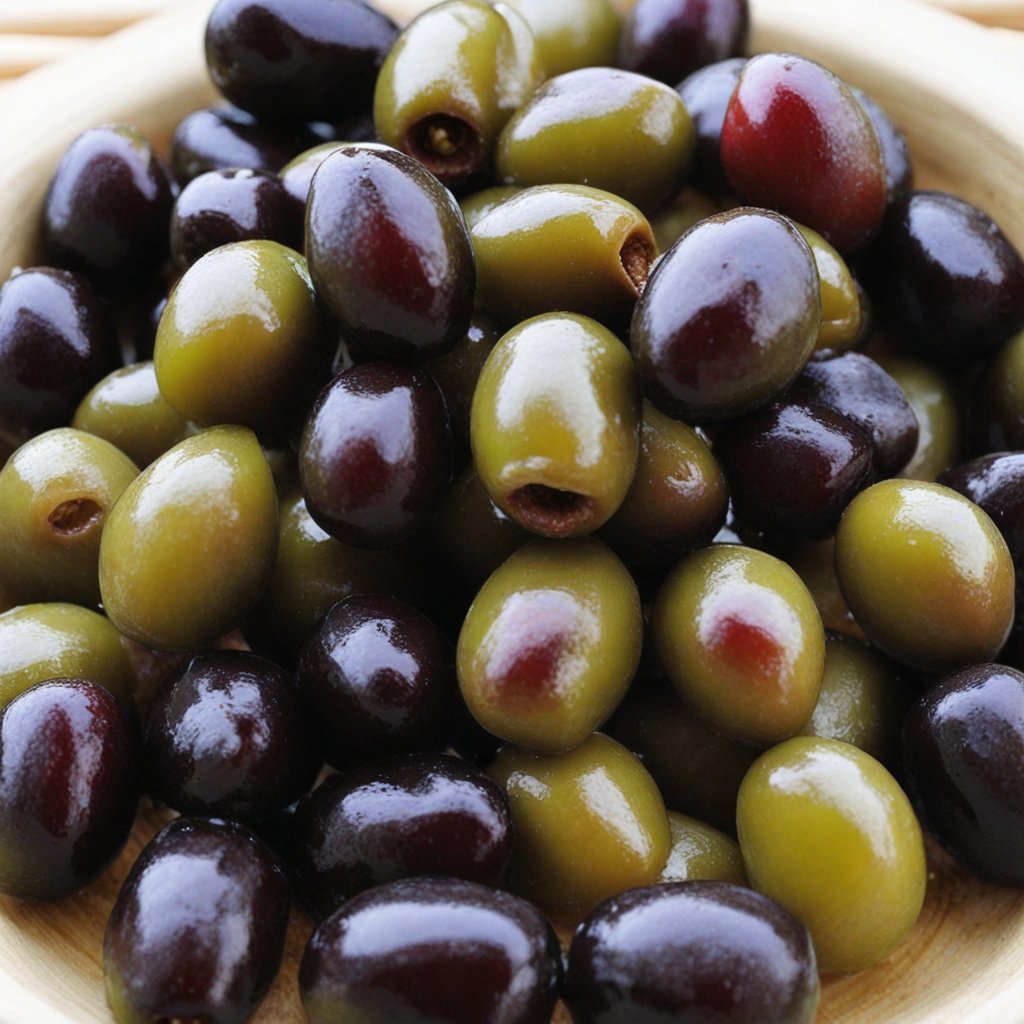Crni rižot
Crni rižot, or black risotto, is a culinary gem originating from Montenegro, celebrated for its rich, deep flavors and striking appearance. This dish is primarily made with cuttlefish or squid, which lends a unique seafood essence that permeates the rice. The rice is cooked slowly in a broth infused with the ink of the cuttlefish, giving it a dark hue and a briny, oceanic flavor profile that is both bold and comforting. The addition of ingredients such as garlic, onions, and white wine enhances the overall taste, while a sprinkle of fresh parsley adds a touch of color and freshness to the dish. What sets Crni rižot apart is its creamy texture, achieved through the careful technique of stirring the rice as it cooks, allowing the starches to release and create a velvety mouthfeel. The taste is a harmonious blend of the sea's bounty and earthy undertones, making each bite an exploration of flavor. The dish is often served with a wedge of lemon on the side, which brightens the flavors and adds a refreshing contrast to the richness of the risotto. Enjoying Crni rižot is not just a meal; it's an experience that transports you to the coastal regions of Montenegro. As you savor each spoonful, you can almost feel the waves lapping against the shore, and the scent of the Adriatic Sea wafting through the air. This dish is perfect for those who are adventurous eaters looking to indulge in a taste that is both traditional and uniquely Montenegrin, making it a must-try for any food lover seeking to broaden their culinary horizons.
How It Became This Dish
The History of Црни рижот: Montenegro’s Black Risotto #### Origins Црни рижот, or black risotto, is a distinctive dish that encapsulates the essence of Montenegrin cuisine. Its origins can be traced back to the Adriatic Sea, where the rich marine life and the Mediterranean climate converge to create a unique culinary landscape. The dish primarily features cuttlefish or squid, which are abundant in the region, and its striking black color comes from the ink of these cephalopods. The use of seafood in Montenegrin cooking is deeply rooted in the nation's history, dating back to the time of the Illyrians, who inhabited the Adriatic coast. Over the centuries, influences from various cultures—Greek, Roman, Venetian, and Ottoman—have shaped the culinary practices of Montenegro. The Venetians, in particular, introduced rice cultivation to the region, which laid the groundwork for the development of risotto as a staple dish. As rice became more integrated into the local diet, Montenegrin cooks began to experiment with it, leading to the creation of dishes like Црни рижот. #### Cultural Significance Црни рижот is more than just a meal; it is a dish steeped in cultural significance. In Montenegro, food is an integral part of social gatherings and celebrations. The preparation and consumption of Црни рижот often symbolize community, tradition, and familial bonds. It is commonly served during festive occasions, such as weddings, family reunions, and national holidays, where the act of sharing a meal fosters connection and camaraderie. The dish also embodies the coastal identity of Montenegro. The Montenegrin coast, with its stunning landscapes and azure waters, has long been a source of pride for its inhabitants. Cooks often use fresh, locally sourced ingredients, reflecting a deep respect for the sea and its bounty. The preparation of Црни рижот typically involves gathering family members or friends, making it a communal affair that echoes the traditional Montenegrin way of life. #### Preparation and Ingredients The foundational ingredients of Црни рижот include rice (often Arborio), seafood (most commonly cuttlefish or squid), onions, garlic, olive oil, and white wine. The key to achieving its characteristic black color is the use of cuttlefish ink, which not only adds visual appeal but also imparts a briny, umami flavor that is emblematic of the dish. The preparation begins with sautéing finely chopped onions and garlic in olive oil until they become translucent. The rice is then added, allowing it to toast slightly before the mixture is deglazed with white wine. As the rice absorbs the wine, the cuttlefish or squid is introduced, along with the essential cuttlefish ink. Gradually, broth is added in stages, allowing the rice to cook slowly while developing a creamy consistency. The dish is typically garnished with fresh parsley and served with lemon wedges, enhancing its flavor profile. The balance of the rich, briny taste of the seafood with the acidity of the lemon creates a harmonious dining experience that reflects the coastal essence of Montenegro. #### Evolution Over Time As with many traditional dishes, Црни рижот has evolved over time, adapting to changing tastes and culinary trends. In the past, it was primarily prepared in coastal villages, where families relied on the catch of the day. However, with the growth of tourism in Montenegro, especially along the picturesque coastline, the dish has transcended its humble origins. Chefs in upscale restaurants have begun to reinterpret Црни рижот, incorporating modern techniques and presentation styles. Some variations include the addition of other seafood, such as shrimp or mussels, while others experiment with spices and herbs, offering a contemporary twist on the classic recipe. Nevertheless, the essence of the dish remains intact, honoring its roots while appealing to a broader audience. The rise of food tourism in Montenegro has also played a significant role in popularizing Црни рижот. Culinary enthusiasts from around the world flock to the country, eager to experience its gastronomic offerings. As a result, local chefs have taken pride in showcasing traditional dishes like Црни рижот, emphasizing the importance of preserving culinary heritage while embracing innovation. #### Global Recognition In recent years, Црни рижот has gained recognition beyond Montenegro’s borders. As Montenegrin cuisine finds its place on the global gastronomic stage, the dish serves as a symbol of the country’s rich culinary history. Food festivals, culinary competitions, and international events often feature Црни рижот, allowing chefs to showcase their skills while promoting Montenegrin culture. Furthermore, the growing interest in Mediterranean diets, characterized by an emphasis on seafood, olive oil, and fresh produce, has led to an increased appreciation for dishes like Црни рижот. Health-conscious diners are drawn to the nutritional benefits of seafood, and the dish’s rich flavor profile ensures its continued popularity. #### Conclusion Црни рижот is a poignant representation of Montenegro’s rich culinary heritage, embodying the deep connection between the land, sea, and its people. From its humble beginnings as a local specialty to its evolution as a celebrated dish on the international stage, Црни рижот tells the story of Montenegro—a narrative woven through time, culture, and community. As we savor this unique dish, we are reminded of the importance of preserving culinary traditions while embracing change. The journey of Црни рижот reflects the broader narrative of Montenegrin cuisine—one that honors the past while looking forward to a vibrant and flavorful future. Whether enjoyed in a rustic coastal tavern or an upscale restaurant, Црни рижот remains a testament to the enduring spirit of Montenegrin culture, inviting all who taste it to partake in its rich heritage.
You may like
Discover local flavors from Montenegro







